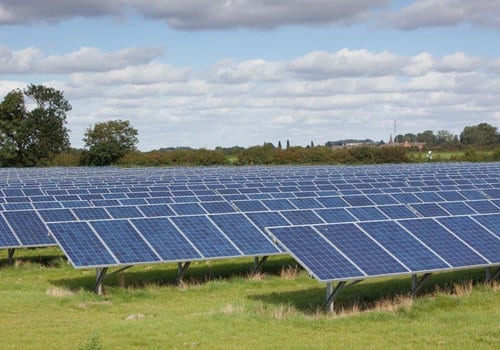Victoria’s second large-scale solar PV farm, the 19MW Swan Hill project in Victoria’s north-west, has been officially opened.
The $36 million project, which is owned and funded by Impact Investment Group’s second Solar Asset Fund, is expected to provide clean electricity for the equivalent of approximately 6,050 Australian homes, and have a 30-year life.
Its opening comes a couple of months after that of the Ganawarra solar farm, which will also have a Tesla big battery added before the coming summer.
As we reported here, the solar farm is also among a growing number of renewable energy projects in Australia developed on a merchant basis, and without a power purchase agreement.
Impact Investment Group achieved financial close on the project in November 2017, after securing $16.5 million in debt funding through specialist fund manager Infradebt.
IIG – whose renewables portfolio is headed up by former Pacific Hydro chief, Lane Crockett – revealed its intentions, in March, to invest $1 billion in renewable energy generation and infrastructure over the coming three years.
In October, it celebrated the formal opening of the 11MW Williamsdale solar farm in the ACT, one of three solar farms contracted by the ACT government at the start of its goal to source the equivalent of 100 per cent of its electricity from renewable energy by 2020.
For Infradebt, the loan represented the first investment for its new Ethical Fund, which was launched in September, backed by a $50 million cornerstone commitment from Future Super, to cater for renewables projects being developed on the merchant market.
IIG said on Thursday that it was “extremely proud” of the Swan Hill project, and its contribution to the local economy and Australia’s clean energy system.
“In comparison to a coal-fired plant, this solar farm will save approximately 155 million litres of water each year – a resource that gets more precious with each passing year,” said IIG’s head of renewable energy infrastructure, Lane Crockett.
“As Australia moves away from its old, polluting coal fired power plants, it will need new electricity generators. That transition could mean dozens of projects like this one; we’d love to see a new boom of solar jobs, not just in Victoria, but across the country.”
“People in this area see the effects of climate change first-hand, but they could be seeing more new, innovative projects like this that are part of the solution.”
The formal opening of Swan Hill Solar Farm comes as the latest figures from the Australian Energy Market Operator’s Integrated System Plan showed that Victoria had captured the largest percentage of Australia’s total committed renewable energy projects – illustrated in the chart below.
Victoria’s renewable energy advocate Simon Corbell said on Thursday that Swan Hill solar farm was a key part of the state’s achievement in renewables.
“Swan Hill solar farm is directly contributing to the growth of large scale renewable energy in Victoria and will contribute to towards achieving the Victorian Renewable Energy Target of 40 per cent renewable energy by 2025,” Corbell said in a statement.
“With the Australian Energy Market Operator having confirmed on Tuesday that Victoria is capturing the largest share of renewable energy growth of any jurisdiction, at 38 per cent, we can expect many more projects like Swan Hill Solar Farm into the future.”











